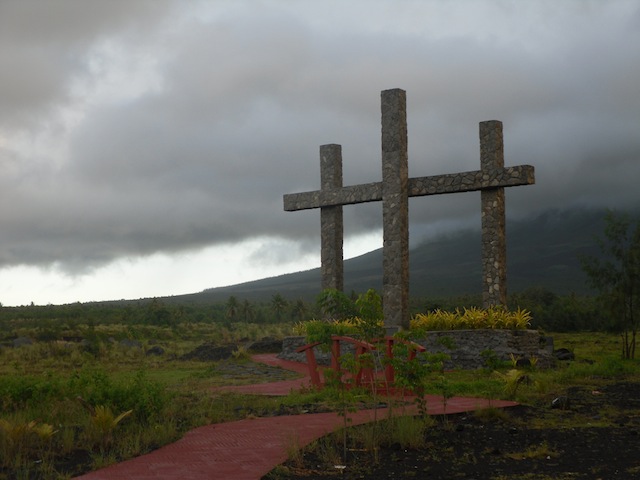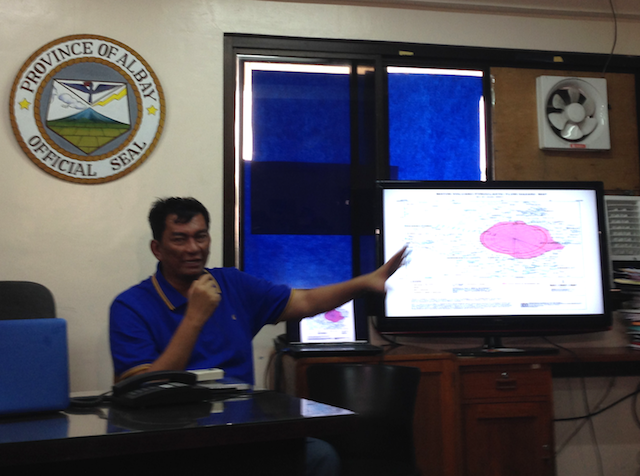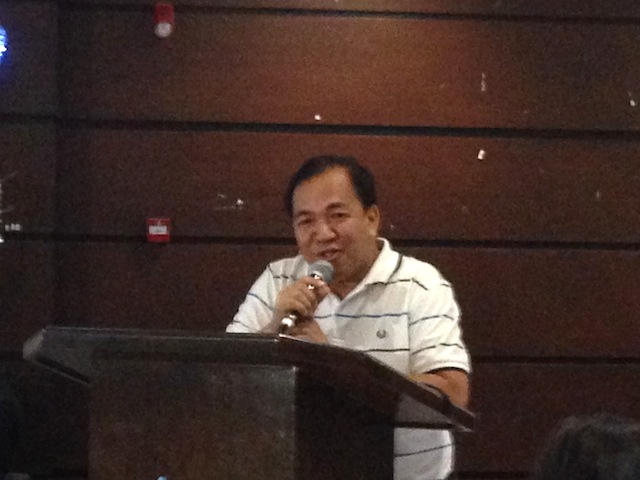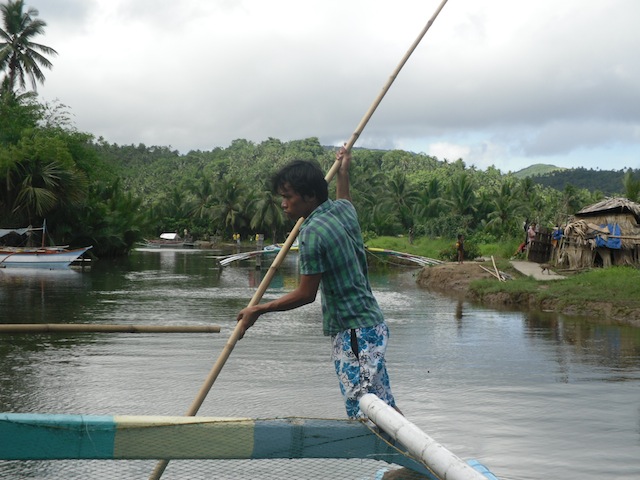LEGAZPI CITY, Albay – Albay Province has long been considered as an incredible tourists’ destination with its breathtaking skyline, historical sites, beaches, famous spicy dishes and of course the majestic Mayon Volcano which is famous for its perfectly symmetrical cone that actively billows smoke.
But across the province, with a population of more than a million people, the landscape is slowly changing. Dealing with climate change effects and natural disasters such as droughts, fiercer typhoons, rising sea level, as well as dwindling water supplies, has almost become a way of life in this city and nearby towns.
Nature, the residents say, is harsh on the Province of Albay.
Mayon Volcano threatens three cities and five towns in the province. The province faces three to five tropical cyclones out of the 19 to 20 that enters the Philippine Area of Responsibility. Not to mention the possibility of tsunamis during earthquakes which are also fairly common in the area. The wrath of these storms are felt throughout the province in various forms – floods, landslides especially in the mountainous region, and storm surges in coastal towns facing the Gulf of Albay.
“ We are nature’s laboratory of climate change effects and disasters. Dramatic change is a reality for the people,” said Albay Governor Joey Salceda, who presently sits as one of the board of the United Nations Green Climate Fund. “ We do have in our doorstep natural disasters that you can think of making our province at risk.”
Climate change will almost certainly make disasters worse, threatening to reverse not only the province’s progress but the entire Philippines as well.
“ Adaptation, therefore, must be pursued in the context of development, its goals on reducing poverty and its constraints on managing erratic weather events,” said Salceda, dubbed as a senior champion of climate change adaptation and disaster risk reduction management by the United Nations International Strategy for Disaster Reduction (UNISDR). “ But as part of our overall development strategy, adaptation becomes an investment with huge economic returns in the long-run. That is why we are in the frontline in confronting the escalating impacts of climate change.”
Of triumph and survival
Scientists agree that climate change is a serious threat to poor, vulnerable communities, and some of its impacts are unavoidable. Severe, large-scale weather most countries experience now is the “new normal” as climate change accelerates.
“ Regardless of where we live, climate change is affecting us, and we will need to try to adapt to the new normal conditions,” warned Rosa Perez, a climate scientist at the Manila Observatory. “ We are seeing changes in temperature, precipitation and water levels and we need to be prepared to the impacts of these changes.”
Perez added that although climate change is a global issue, the impacts are very localized and there is a need to focus on vulnerability and adaptation assessment.
In the past few years, the farming community in Albay, particularly in barangay Joroan, Tiwi town, has suffered from droughts, change in weather patterns, high temperatures, land degradation and crop failure. These have threatened food security and settlements, forcing farmers to opt for relocation to new areas in search of better conditions.
“ We are surviving amidst the changing climate and the disasters we confront,” lamented Felix Condino, an Agta farmer. “ Most of the time, we are literally on our knees praying that we produce enough.”
He said that while climate change and disasters spell a misfortune for rural livelihoods and agriculture in their community, most of them are receiving assistance from the local government through seed subsidy program and on how to improve and best manage their agricultural production. These also include: good crop storage methods, harvesting rainwater, better application of fertilizers, non-farm entrepreneurial courses and enhancing the weather changes through their indigenous knowledge.
Like Condino, 65-years-old Aniceta Nunez from the Tagaytay Resettlement Site in Camalig town said that life is becoming unbearable nowadays with erratic weather events that people are experiencing. She and her family left their makeshift house in the coastal village when Super Typhoon Durian in 2006 wiped out their fishing village. More than 10,000 people have moves to safer grounds.
“ We feel safer here than risking our lives near the sea. We are thankful that the government has provided us some livelihood and better homes,” Nunez said.
Even Kristine Mae Rempillo, 7, a pupil from Gogon Central School in Legazpi City, believes that integrating climate change and disaster into their classroom subjects are helpful for children in times of calamities in their areas.
“In class, we study the different types of natural hazards present in our province: typhoons and floods, earthquakes and volcanic eruptions. It is important that we know what to do in emergencies so we can be safe,” Remillo said, adding that she and her classmates also participate in the school’s regular drill for community disaster preparedness.
Children as young as five years old are taught how to evacuate and go to designated meeting points as soon as a typhoon warning signal is raised over the province. In fact, Gogon Central School officer-in-charge Principal Teresa Esplana said the Japan International Cooperation Agency (JICA), along with six other elementary schools in Albay has constructed earthquake-proof classrooms that can be converted into evacuation shelters during disasters.
Aside from the evacuation centers, Albay has already built eight resettlement sites within the province for those in high risks areas such as near the Mayon Volcano and coastal areas. The permanent housing cost more than P2 billion for more than 10, 076 households.
Zero Casualty goal
In Albay, dealing with climate change and disaster is not something new. In fact, they have mastered their adaptation and disaster risk preparedness.
“ We always aim for a zero-casualty during natural calamities. And I would also like other provinces or even Metro Manila to focus on disaster management especially during rainy season,” said Governor Salceda.
Albay is the first province to proclaim climate change adaptation policy as a governing policy. The province has initiated various innovative approaches to tackling disaster risk reduction and adaptation, as well as implemented the “zero casualty program” during calamities. It has also mainstream climate change adaptation in the education sector.
In fact, for the past 20 years, disaster preparedness has always been part of the lifestyle of these people.
The “Zero-Casualty Principle” has been ingrained in every member of the society – from the citizens to the government officials.
Cedric Daep, department head of the Albay Public Safety and Emergency Management Office (APSEMO), believes that what makes the province’s “Zero-Casualty Principle” a reality is the institutionalization of an effective disaster risk, reduction and management program.
APSEMO was established in 1995 to serve as the nerve center for a well-organized disaster-preparedness, response and recovery program.
“Kahit walang politician, kaya naming i-handle [ang mga disaster]. Ang policy diyan, we count the number of victims, not the number of voters (Even if we change administration, we can handle disasters. Our policy is to count the number of victims [of disasters] and not the number of voters,” Daep said.
With the implementation of the “zero casualty” goal, Daep said Albay in a span of more than 15 years has successfully minimized and avoided loss of lives as well as damage to properties, except during typhoons Milenyo and Reming in 2006 where more than 600 people were killed and an estimate of P5 billion properties were destroyed.
“ We wanted to make sure that in every disaster that we encounter, we see to it that there is a zero casualty, so we really need to strengthen our response measures together with other local government agencies and the cooperation of the people in the communities,” Daep stressed.
Implementing the “zero casualty” goal involves comprehensive planning from the early warning systems in place that is real-time for flooding, landslides and mudflow, to communication protocol or warnings and updates that are relayed using two-way radio or via text messages and social media, up to the meticulous evacuation procedures.
The Albay Provincial Board (Sangguniang Panlalawigan) in 1994 filed a resolution for the creation of a permanent disaster management office. APSEMO was established and institutionalized in 1995, following the objectives of Presidential Decree 1566 of 1978 or the decree under which the then National Disaster Coordinating Council was formed.
Agnes Espinas wrote a paper for the Human Development Network in 2013 citing the Yokohama Declaration of the International Decade for Natural Disaster Reduction (IDNR) in 1994 as a likely trigger for the institutionalization of APSEMO.
Espinas wrote, “IDNR has introduced a paradigm shift from disaster response to disaster risk reduction – that is, the realization that loss and damage from disasters can be prevented or minimized if people and governments are prepared, well-informed, and have the capacity to bounce back after a disaster strikes.”
Albay Province has also been updating their disaster risk management such as: risk mapping (comprehensive land use plan); relocation sites; geostrategic and engineering interventions; early warning systems; social preparation or community-based warning and evacuation planning; preemptive evacuation and healthcare as disaster response; and communications planning with the media and the public.
Daep, however, said there are instances that cannot be avoided that there were “failure in communication and evacuation which resulted into lack of capacity to expect a situation that is not expected.”
He further explained that because the province was still recuperating from Milenyo, resources to be prepared during Reming were limited.
Eugene Escobar, an officer from the APSEMO clarified that the “Zero-Casualty Principle” is focused on the direct impact of natural hazards like flood, storm surge, and landslides.
Albay has been continuously doing to prepare for disasters and adapt to climate change – from capacity and vulnerability assessment to drills and exercises.
Early Warning comes with scientific basis – through the help of hazard maps for every locality and every imaginable disaster. They have identified evacuation centers and positioned relief and help prior to an impending natural calamity – think of a tactical military operation carefully planned, only this time, the enemy is nature’s wrath itself.
“Warnings are area-specific. Hindi po applicable ang ginawa sa isang barangay sa kabilang barangay. Barangay po ang nagde-develop ng warning criteria, provincial government only facilitates (Warnings are area-specific. We cannot apply the practices done in one village to another. Every village develops its own warning criteria while the provincial government facilitates),” explained Escobar.
Somehow, Albay still rely on indigenous warning observations – looking at how animals behave prior to a cyclone or a volcanic eruption, or smelling and feeling the wind if there’s an upcoming storm.
Escobar said that it is a nod to the cultural identity and indigenous knowledge of the natives, something other countries like calamity-prone Japan have been continuously studying on.
The power of media
Albay has also been exhausting all the possible means of communication to make sure that every citizen receives warning and has an ample time to prepare.
“Ang pinaka-effective na communication, habang di pa dumarating, Smart Infoboard. We have at least 98-99 percent reach sa lahat ng barangays (The most effective means of communication prior to a natural calamity is via Smart Infoboard which has 98-99% reach to all barangays,” said Escobar.
Smart Communications Inc., one of the leading telecom companies in the Philippines approached the provincial government and offered this service – 18 cellular phones with SIM cards for text blasting the local government unit heads.
Smart Infoboard is an internet-based service wherein a message is sent to a database of numbers for warnings and alerts.
APSEMO also recognizes that Facebook is also very helpful in disseminating information, especially to the youth.
However, Daep believes that the most crucial component of information dissemination is the provincial government’s partnership with the local broadcast media as some areas cannot be reached by mobile phone signals.
“Ang number one na kailangan namin is community awareness. Once aware ang tao about the situation, makakapaghanda. They are also technical information about what to do (The first thing that we need to consider is community awareness. Once the people know about the situation, they will be able to prepare. To do that, they also need necessary technical information,” said Daep.
Rising above the ruins
To describe the culture of resilience in the province, one can turn at the province’s famous landmark—the Cagsawa Ruins, says Albay poet laurete Abdon Balde Jr.
“The Cagsawa Ruins—often captured in photos with the bell tower and walls made up of volcanic rocks against the backdrop of Mayon Volcano—is a symbolic testament to the resilience of the Albayanons and how we can get back up better and stronger after a disaster,” Balde said.
In 2014, Albay recorded damages worth P4.1 billion from typhoon Glenda in July and P51 million agricultural damage from typhoon Ruby in December, according to data from the local disaster office.
“Our location makes us prone to natural hazards but it also gives us natural wonders, of which the most famous is the iconic Mayon Volcano known for its perfect cone,” said Balde, who also chairs the provincial history and cultural unit.
The development of tourism, agriculture and enterprise industries is the third stage in Albay’s development program under Salceda’s administration. The first is the disaster resiliency program, which ensures community safety as a precursor for other development programs and the second focused on increasing local capacity on health and education.
Gains in the education sector include decreasing the dropout rate to 0.3 percent and increasing the college graduates from 34,000 in 2006 to 188,000 in 2013, of which a third receives government financial assistance.
In the health sector, the number of PhilHealth insurance members increased from 17,000 to 172,000 between 2006 and 2013.
Moreover, plans for the fourth stage for increased competitiveness is underway as the province is securing energy development and infrastructure investments with partners.
With disasters shaping the province’s rich history, Balde helped developed a tourism program that highlights the natural beauty of the place and its warm, resilient people.
“Rebirth instead of decline—that is a key message we promote in tourism. Our destinations such as the Cagsawa ruins and Daraga Church that withstood strong typhoons and earthquakes are symbols and landmarks of resilience,” he said.
According to the local tourism bureau, Albay is now the center of tourism boom in the country, with foreign arrivals of about 339,000 in 2013, up from only 8,700 in 2006.
The Albay government divided its tourism destinations into four categories: a) the Blue zone that include beaches, island hopping, whale shark (butanding) watching and diving tours; b) the Green zone for ecotourism-adventure sites such as the Quitinday Green Hills and ATV rides up to the Mayon lava wall; c) the Colonial road that features historical sites such as old churches; and d) the Silk Road that features Bicolano cuisine such as the pinangat, Bicol express, and sili ice cream as well as handicrafts made by the blacksmiths of Cobo and red clay ceramics in Tiwi.
“ Climate-proofing” development
While addressing issues surrounding climate change and natural disasters that are affecting thousands of people in Albay Province, the government believes that it has been progressing in terms of economy, education, environment, equity and health.
With more than half of the total area of the Philippines at risk of natural disasters making 81 percent of its population at risk, more local governments are likely to draw lessons from Albay Province’ initiatives on disaster risk reduction and climate change adaptation.
“ Albay is vulnerable to disasters and climate change effects. But we can do something about it. Adapting to the changing climate that worsens disasters can be done by building resilient societies and fostering sustainable development,” Albay Governor Salceda stressed.
By: Imelda Abano, Shai Panela and Anna Valmero
photo credit: IVAbano and AValmero
Latest posts by EnviroNewsph (see all)
- Global fund aimed at protecting nature and accelerate investment in conservation, launched in Canada - August 25, 2023
- Why ‘loss and damage’ is the most bitterly fought-over issue at COP27 climate talks? - November 18, 2022
- U.S. hands over P2.3M in equipment and wildALERT system to PH to protect wildlife - December 16, 2020








